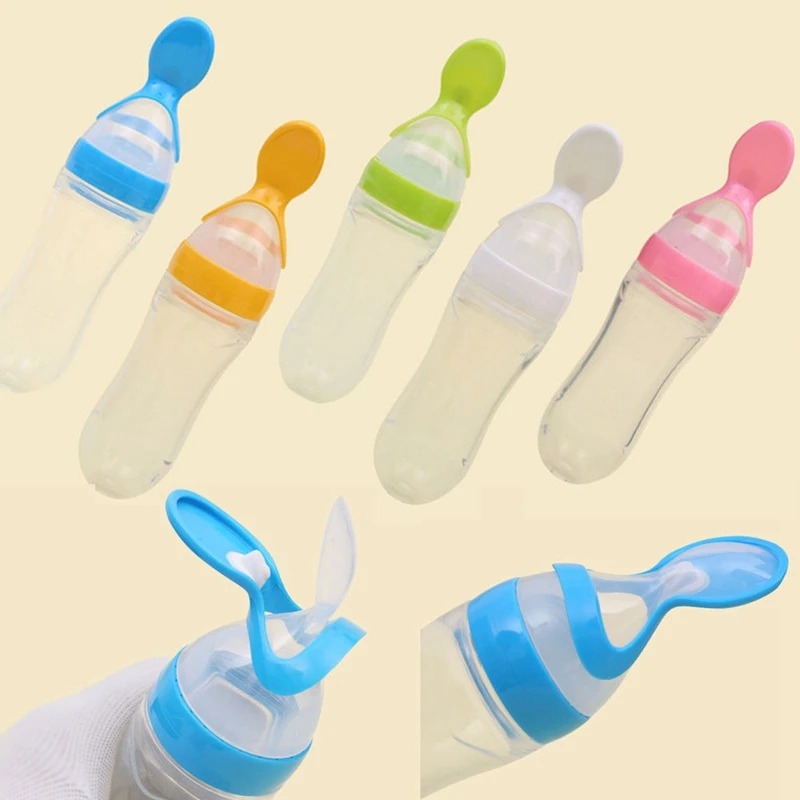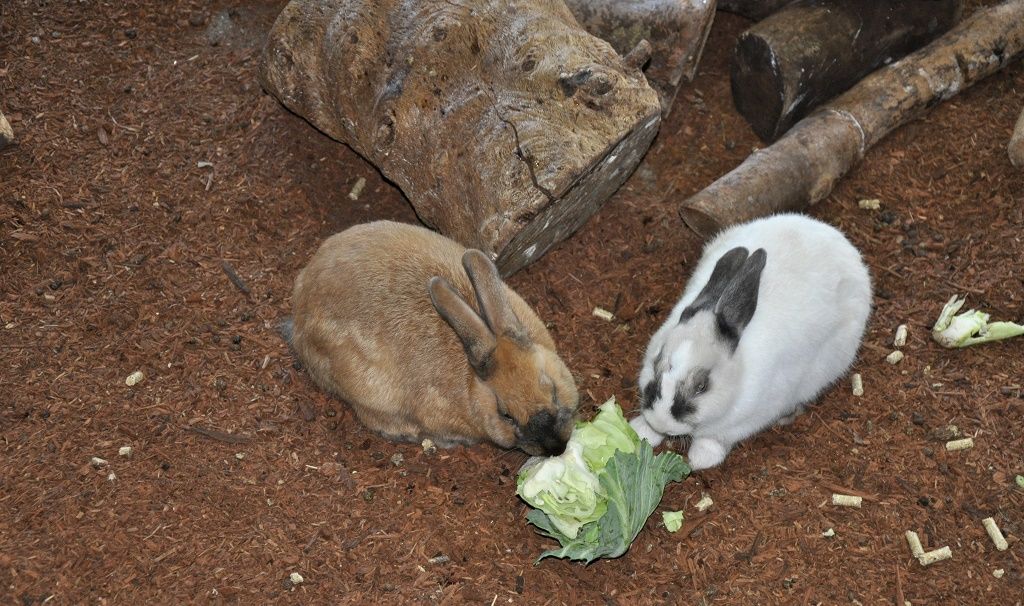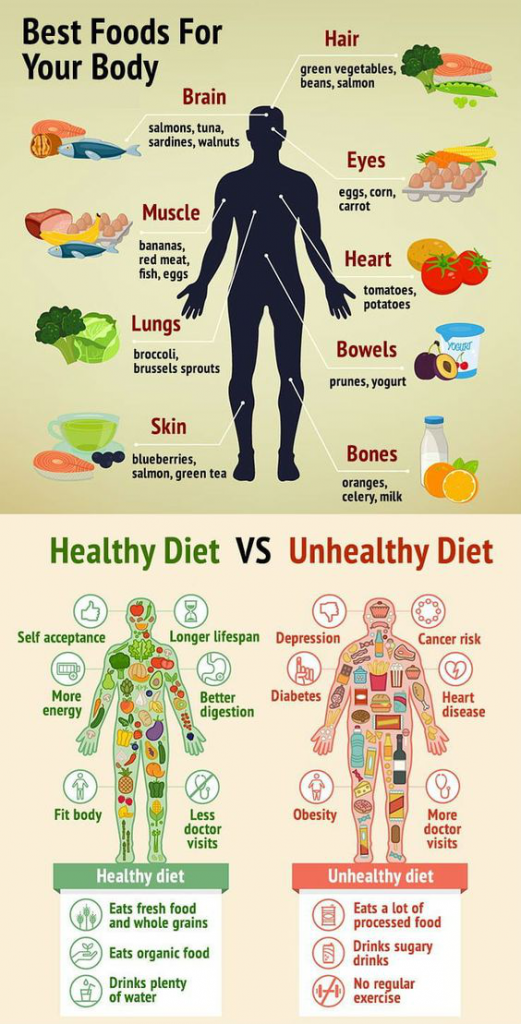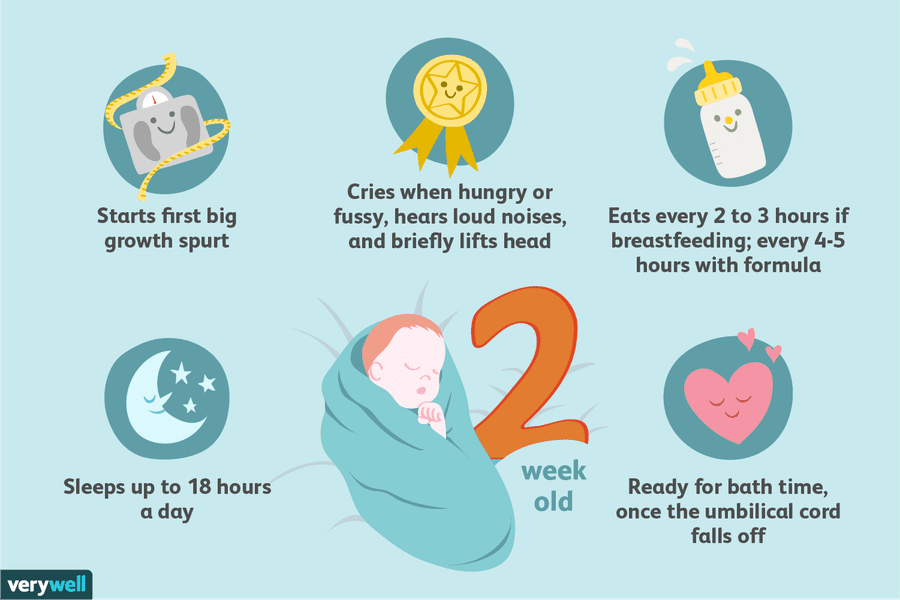How do babies get food while in the womb
Babies Taste Buds Develop in Utero
We all know that eating healthy during pregnancy will help your baby to grow and flourish while in the womb. But you may be surprised to learn that you can impact baby’s taste preferences before they reach the highchair or even start nursing! In fact, your baby’s first forays into “taste development” begin in utero with everything that mom eats. Just eight weeks after conception, your baby is beginning to develop taste buds. By the third trimester, your baby will have more taste buds than at any other point in their lives!
While in the womb, babies get most of their nutrition through the umbilical cord, but they also swallow and digest their moms’ amniotic fluid. In fact, 10-20% of the protein a baby consumes comes from what she drinks.¹ And studies show that a mother’s amniotic fluid has distinctive flavors related to what she has been eating and drinking.
There isn’t a single flavor that researchers have found that doesn’t show up in utero. And babies actually remember flavors from their time in the womb and may show preferences towards them after birth. This process explains why adopted infants, who have left their native cultures, innately prefer their native cuisines years later, even though they may never have actually eaten them in the conventional sense.
Dr. Greene describes this pre-birth chapter as the beginning of a baby’s “Nutritional Intelligence,” an intelligence that may help her choose healthy food later in life. Simply stated, cultivating Nutritional Intelligence is about developing babies’ palates from the earliest stage, helping them to “recognize and love healthy amounts of healthy foods.”
Your baby can learn to appreciate and recognize the flavors of healthy food starting in the second trimester, when they develop highly sensitive taste buds. Your baby’s taste buds allow her to learn the rich, diverse flavors of delicious food from all food groups.
Since babies learn by imprinting and through repetition, pregnancy is a great opportunity for you to cook meals with whole ingredients, herbs and spices, and favorite healthy foods that you want your child to love. If you have a special love for creamy avocados, pungent cheese, or tart lemons during pregnancy, your baby may show preferential treatment to those familiar flavors down the road.
If you have a special love for creamy avocados, pungent cheese, or tart lemons during pregnancy, your baby may show preferential treatment to those familiar flavors down the road.
At birth
Your baby will show a preference for sweet flavors, with a “sweet tooth” best satiated by the naturally sweet taste of breast milk. Please check with your physician but new research even suggests that baby’s exposure to breast milk and amniotic fluid can positively impact her reaction to common allergens, decreasing the likelihood of developing allergies. Dr. Greene recommends you enjoy nuts, cooked eggs and other potential allergens while pregnant and nursing. It may actually help your baby!
Tags
- Article
- First 1000 Days
When does the placenta form, and what does it do? Learn all about the placenta.

One of the many remarkable things about pregnancy is that you're not only growing a new human being, but also an entirely new organ. And pretty much everything your baby needs to develop and thrive flows through it. Find out all about the amazing placenta, including when it forms and what it does.
What is the placenta?
The placenta is a pancake-shaped organ that develops within the wall of your uterus and connects to your baby though the umbilical cord. By the end of pregnancy, it grows to be about 9 inches in diameter and about an inch thick at the center.
What does the placenta do?
- It delivers oxygen and nutrients (such as vitamins, glucose, and water) from your body to the baby's, and processes the waste products from your baby.
- It produces the hormones that help your baby grow and develop.
- It allows antibodies to pass to your baby from your bloodstream. These antibodies protect against certain bacterial infections and viral illnesses, like diphtheria and measles, until after your baby is born and old enough to get their first vaccinations.
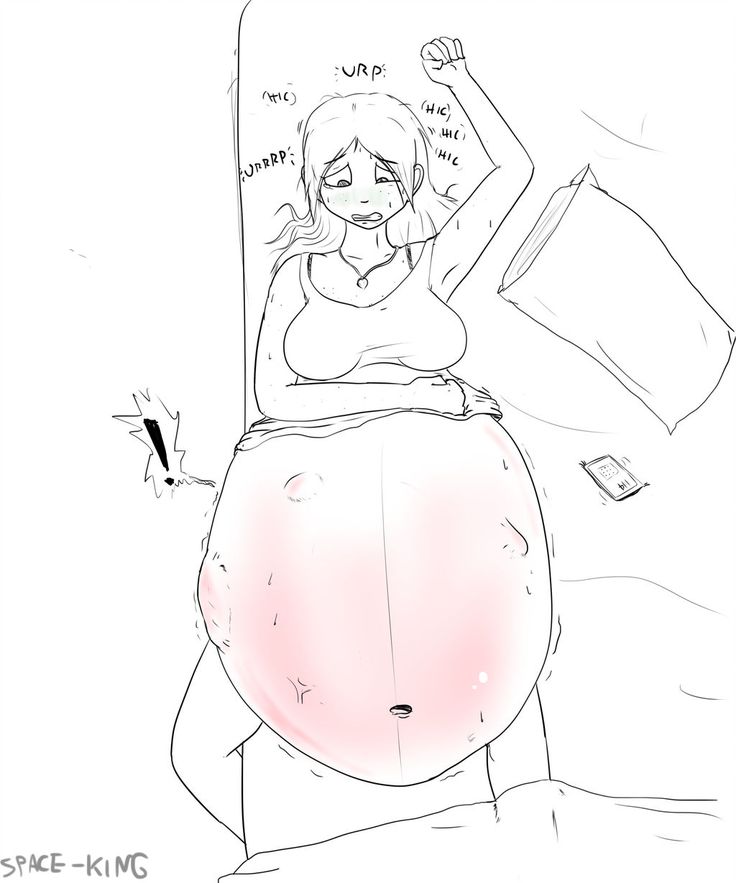
When does the placenta form?
The placenta starts forming as early as six days after fertilization. At this point your baby-to-be is a hollow ball of several hundred cells called a blastocyst. The blastocyst attaches to the lining of the uterus, usually near the top. This is called implantation, and it's completed by day 9 or 10.
The wall of the blastocyst is one cell thick except in one area, where it's three to four cells thick. In the thickened area, the inner cells develop into the embryo. The outer cells throughout the embryo burrow into the lining of the uterus and develop into the placenta.
The placenta produces several hormones that help maintain the pregnancy, including human Chorionic Gonadotropin (hCG), which prevents the ovaries from releasing eggs and stimulates the ovaries to produce estrogen and progesterone continuously. (Home pregnancy tests measure levels of hCG in your urine.)
The placenta is fully formed by 18 to 20 weeks but continues to grow throughout pregnancy. At delivery, it weighs about 1 pound.
At delivery, it weighs about 1 pound.
How the placenta works
The placenta connects to the umbilical cord through thousands of microscopic "fingers" of tissue (chorionic villi) containing a network of blood vessels that connect to the embryo's circulatory system. The villi are formed by 6 weeks of pregnancy, and your blood fills the spaces around them by 12 weeks. When your blood comes in contact with the villi, nutrients are exchanged for waste through the villi walls.
The villi also act as a filter, preventing some viruses and bacteria from reaching your baby, while allowing molecules of everything you ingest as well as antibodies and gases to pass through.
How do babies get nutrients in the womb?
Your baby needs nourishment from the get-go. Until the placenta is developed enough to provide nutrients, your baby receives nutrients from the lining of the uterus, called the endometrium. (These same endometrial cells will quickly multiply to form the placenta. )
)
In the early weeks of pregnancy, glands in the uterine lining secrete glucose, which it stores as glycogen. At first, this glycogen is the only source of nourishment for your baby.
At about 8 to 12 weeks into pregnancy, the placenta takes over as a nutrient source for your baby. (And at this point the uterus stops secreting glycogen.) Here's how it works:
- When you eat, the food travels to your stomach, where it's broken down (digested) into glucose, fats, vitamins, minerals, and protein.
- The nutrients are absorbed into your bloodstream and travel to the placenta.
- Blood vessels in the umbilical cord pass the nutrients from the placenta to vessels that flow from the umbilical cord to the baby. At this point, your baby will begin to gain weight more quickly. The umbilical cord also returns waste products from your baby to the placenta and into your circulation for elimination.
Wondering how fast the food you eat reaches your baby? It depends on how quickly the food is digested and enters your bloodstream. Some foods may take several hours, while substances like caffeine can enter your bloodstream and cross the placenta in a very short time. For more information, watch our video on how food reaches your baby.
Some foods may take several hours, while substances like caffeine can enter your bloodstream and cross the placenta in a very short time. For more information, watch our video on how food reaches your baby.
Harmful substances that cross the placenta
Along with all the good things that are transferred to your baby, some harmful ones can cross the placenta too. These include alcohol, nicotine, and illegal drugs as well as some medications.
No safe level has been established for alcohol consumption during pregnancy, and experts recommend not drinking any amount while you're expecting. The same goes for smoking and using illegal drugs. Although marijuana is legal in some states, experts recommend against using it during pregnancy.
Use caution when taking prescribed and over-the-counter medications during pregnancy because most cross the placenta. Although many medications are considered safe for your baby, a few are known to cause birth defects. And for many drugs, there simply is not enough research to know their effects on an unborn baby. Your provider can help you determine whether the benefits of a certain drug outweigh the risks in your case.
Your provider can help you determine whether the benefits of a certain drug outweigh the risks in your case.
Although the placenta acts as a barrier to most bacteria, some viruses and small bacteria can cross it. Many have no effect, but others can be harmful to a developing baby. That's one reason why it's important to get all recommended vaccinations before and during pregnancy, including a flu shot and a Tdap vaccine to protect against tetanus, diphtheria, and pertussis (whooping cough).
Both the flu and pertussis can be life-threatening for babies, and getting these vaccines while you're pregnant enables antibodies to pass through the placenta that will protect your newborn from catching these illnesses. Getting your COVID vaccine and boosters will help protect you from infection and will also provide your baby with antibodies through the placenta (and your breast milk, if you breastfeed).
Here are a few other things you can do to promote a healthy placenta and a healthy baby:
- Go to all your prenatal checkups and work with your healthcare provider to manage any health conditions, such as high blood pressure, which can cause problems with the placenta.

- Don't smoke or use drugs. Placental problems, like placental abruption, are more common in women who smoke, use illegal drugs (like cocaine and heroin), or abuse medications (like opioids).
Delivering the placenta
A few minutes after your baby is born, the placenta detaches from the wall of your uterus and is delivered through your vagina. This is called the "afterbirth."
You'll have a few contractions, but this stage of childbirth usually lasts only about five to 30 minutes and feels more like menstrual cramps than labor pains. (If you're having a c-section, your doctor will remove the placenta manually.)
If you want, and if you've made prior arrangements with your provider, you can save the placenta. Some women believe that encapsulating and eating the placenta after birth helps them recover faster, though there's no scientific evidence to support this claim.
Also note that some experts think eating the placenta may be harmful, as there are potential risks, including infection and heavy metal contamination.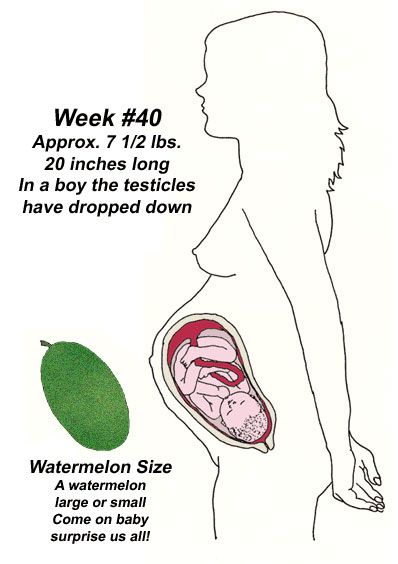 Be sure to discuss this topic with your provider if it's something you're considering.
Be sure to discuss this topic with your provider if it's something you're considering.
Learn more:
Placenta previa
Placenta accreta
Slideshow: Fetal development, week by week
advertisement | page continues below
Peculiarities of intrauterine development of a baby - Motherhood in Khabarovsk
Peculiarities of intrauterine development of a baby, 2-5 week
Where does your baby start?
Your future baby consists of about 200 cells.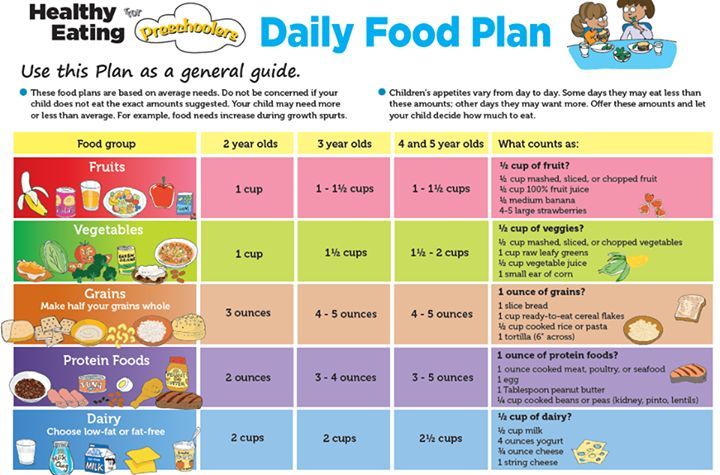 The embryo implants in the endometrium, usually at the top of the front of the uterus. The inside of the embryo will become your baby, and the outside will become two shells: the inner, the amnion, and the outer, the chorion. First, an amnion forms around the embryo. This transparent shell produces and retains warm amniotic fluid that will protect your baby and wrap him in a soft diaper. Then the chorion is formed. This membrane surrounds the amnion and turns into the placenta, a special organ connected to the embryo by the umbilical cord. The placenta will become the link between you and your baby and will support and nourish your baby throughout your pregnancy. nine0003
The embryo implants in the endometrium, usually at the top of the front of the uterus. The inside of the embryo will become your baby, and the outside will become two shells: the inner, the amnion, and the outer, the chorion. First, an amnion forms around the embryo. This transparent shell produces and retains warm amniotic fluid that will protect your baby and wrap him in a soft diaper. Then the chorion is formed. This membrane surrounds the amnion and turns into the placenta, a special organ connected to the embryo by the umbilical cord. The placenta will become the link between you and your baby and will support and nourish your baby throughout your pregnancy. nine0003
Together, these membranes make up a double amniotic sac that contains your baby and amniotic fluid. The amniotic sac forms about 12 days after conception and immediately begins to fill with amniotic fluid. Until this time, the embryo can split into twins or triplets, but then this is no longer possible.
The yolk sac is formed 3 weeks after conception. It produces blood cells until the embryo learns to make it on its own.
It produces blood cells until the embryo learns to make it on its own.
As soon as the embryo implants into the wall of the uterus, it releases villi from the base of the future placenta in order to grow stronger. These villi collect nutrients from your blood. At this stage, the embryo is still tiny - only 1 millimeter in length. Three layers of cells are formed: from the ectoderm the brain, nervous system, skin and hair are obtained, from the endoderm the digestive organs, and from the mesoderm the bones, muscles, blood and connective tissues. nine0003
Your ovaries begin to produce more of the hormone progesterone, which prevents the endometrium from becoming thinner. Estrogen levels also go up and these hormonal changes combined make some women suspect something is up.
Features of intrauterine development of the baby, 6 week
Formation of teeth in utero
At the 6th week of pregnancy, the baby begins to form teeth. Initially, they are thin layers of special tissue in the mouth of the embryo, then gradually thickening, they begin to take their usual shape. It will take another couple of years after birth, and the little one will acquire a “full set” of milk teeth. nine0003
Initially, they are thin layers of special tissue in the mouth of the embryo, then gradually thickening, they begin to take their usual shape. It will take another couple of years after birth, and the little one will acquire a “full set” of milk teeth. nine0003
Features of intrauterine development of the baby, 6 week
How does your baby grow in the 5th week of pregnancy
The embryo floats in the amniotic fluid.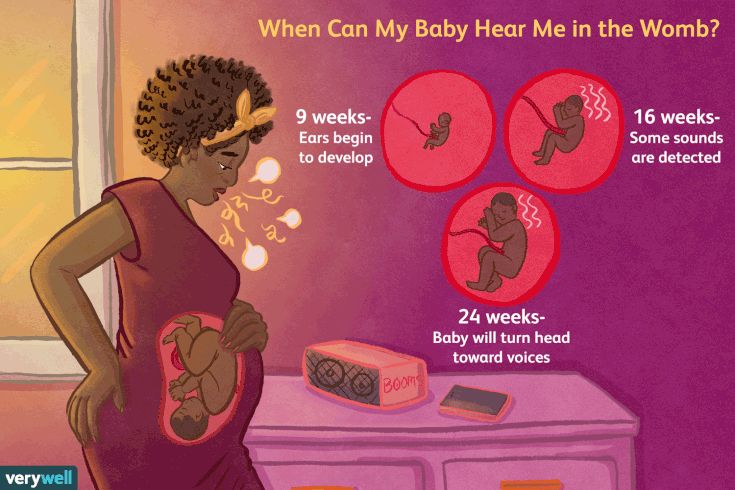 He begins to develop the brain and spinal cord, as well as the rudiments of the digestive tract. Eyes begin to form, a pair of depressions on either side of the brain. The heart, blood cells and blood vessels also appear.
He begins to develop the brain and spinal cord, as well as the rudiments of the digestive tract. Eyes begin to form, a pair of depressions on either side of the brain. The heart, blood cells and blood vessels also appear.
All of your baby's oxygen and nutrients come from you. Its blood arrives at the placenta via two arteries in the umbilical cord. In the placenta, nutrients enter the baby's blood, and then the blood returns to the baby through a vein in the umbilical cord. It also removes carbon dioxide and waste. Although your circulatory systems are closely connected, they do not communicate directly. nine0003
The length of the child is 0.15 - 0.2 cm.
Features of intrauterine development of the baby, 7 week
How does your baby grow in the 6th week of pregnancy
Although so far your baby is most similar to a tadpole, the shape of the body begins to appear: the baby has a head with small indentations in place of the eyes, ears and mouth, an arched back and - for now - a tail (long before birth, it will disappear, leaving behind coccyx memory).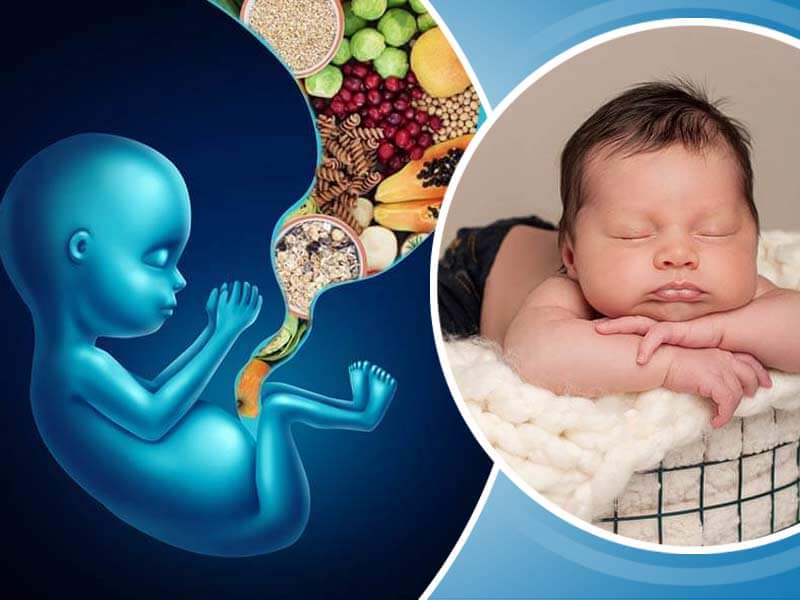 The baby begins to develop all the main organs and systems. Blood vessels form and the heart begins to beat. If you now do an ultrasound, the heartbeat will be noticeable. The heart pumps blood throughout the baby's body and through the chorionic villi, from which the placenta is formed. Tiny nostrils and kidneys appear where the arms and legs used to be. The neural tube that connects the spinal cord and brain closes. nine0003
The baby begins to develop all the main organs and systems. Blood vessels form and the heart begins to beat. If you now do an ultrasound, the heartbeat will be noticeable. The heart pumps blood throughout the baby's body and through the chorionic villi, from which the placenta is formed. Tiny nostrils and kidneys appear where the arms and legs used to be. The neural tube that connects the spinal cord and brain closes. nine0003
There are several ways to measure your baby's height and weight, but at this stage your baby is still quite small, about the size of a grain of rice, although your baby will now start to grow rapidly.
The length of the child is 0.4 - 0.6 cm.
Features of intrauterine development of the baby, 8 week
How does your baby grow in the 7th week of pregnancy
The baby's head has formed and ears and eyes have begun to form: pigment accumulates in the retina, so the eyes still look like dark ovals - at this stage they are still located on the sides of the head.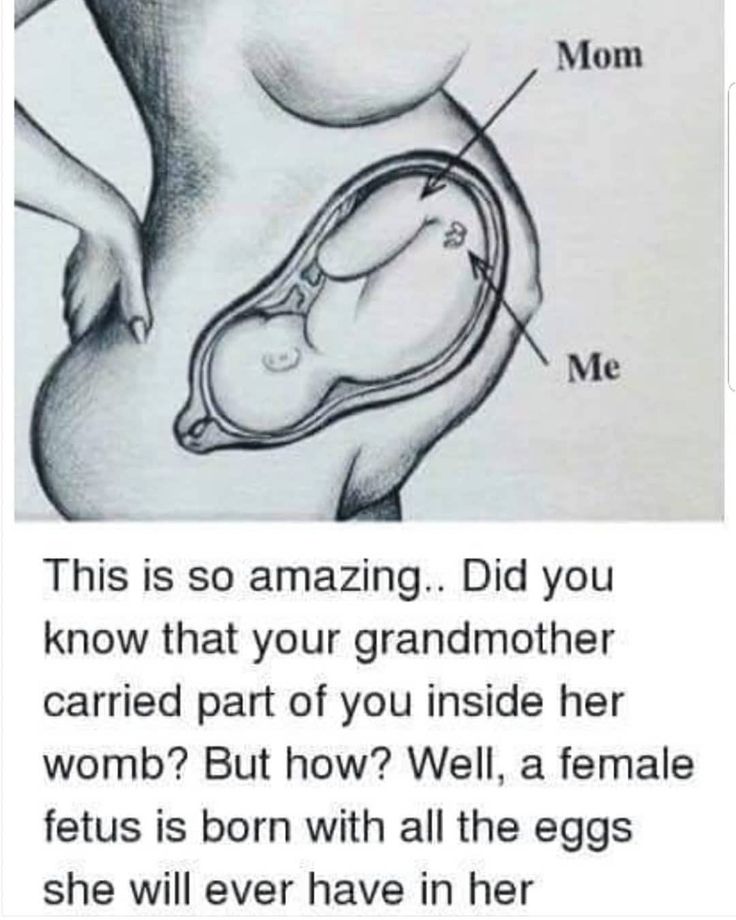 The rudiments of the lungs and kidneys, intestines and pancreas are visible, nerves and muscles begin to develop. Tissues appear that will turn into the spine and other bones. The rudiments of the arms become longer, there is a hint of the brush. nine0003
The rudiments of the lungs and kidneys, intestines and pancreas are visible, nerves and muscles begin to develop. Tissues appear that will turn into the spine and other bones. The rudiments of the arms become longer, there is a hint of the brush. nine0003
The baby is still the size of a pea, but the heart is already divided into the right and left ventricles and is beating confidently, driving blood through the body. A hole is left in the septum between the ventricles, and blood flows from one part of the heart to another, bypassing the lungs, because before birth, the baby receives oxygen from you - through the placenta and umbilical cord. After birth, this opening will close. The brain is divided into two lobules, which will turn into the right and left hemispheres.
The length of the child is 0.7 - 0.9see
Features of intrauterine development of the baby, 2-8 week
How does the baby's cardiovascular system develop?
Your baby's cardiovascular system is formed in the very first days of existence. The first contractions of the heart and blood movements are detected already at the beginning of the fourth week of development. By the end of the fourth week, it is already possible to distinguish the main parts of the heart. But it still functions as a simple contracting tube with an undivided flow of blood. This is not yet a human heart, but only its “rough draft”. From the middle of the sixth week of embryo development, a “working drawing” begins to take shape: the process of development of intracardiac septa begins. By the beginning of the eighth week, the heart already looks like a normal human heart. It even divides into a right and left half (the opening in the interventricular septum closes around the seventh week of development). Only the oval opening in the interatrial septum will remain open until birth, the valve of which allows blood to move into the left atrium from the right, but does not allow blood to move in the opposite direction. The ingenious engineering of nature has thought of everything, foreseen everything.
 nine0003
nine0003
Features of intrauterine development of the baby, nineweek
How does your baby grow in the 8th week of pregnancy
Your baby's rapid growth and development continues and this week will be a turning point as many major organs are being formed, including the lungs, heart and brain.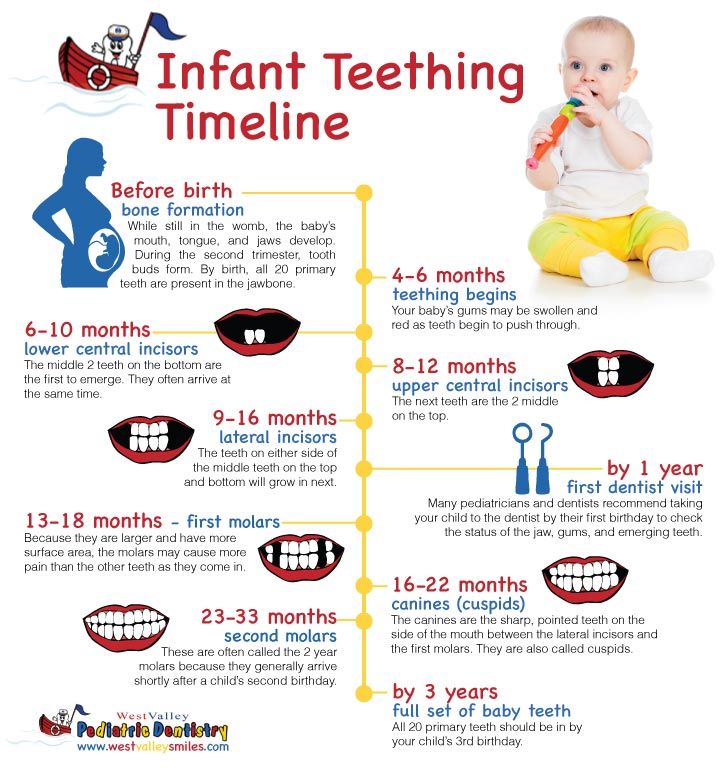 The body of the baby grows and straightens, although it is still the size of a small bean.
The body of the baby grows and straightens, although it is still the size of a small bean.
The arms and legs are stretched out, the hands can be easily distinguished. Tiny pimples appear on the hands and feet, which will turn into fingers, although for now they are connected by membranes. Bones are starting to form, and the face, brow ridges, and auricles are already taking shape. nine0003
The length of the child is 0.9 - 1.2 cm.
Features of intrauterine development of the baby, 10 week
How does your baby grow in the 9th week of pregnancy
This week your child will become much more like a person, although he is still very small.
All the most important organs began to form, hair follicles appear. The liver produces red blood cells. The body of the baby is more and more stretched, the head is more clearly separated from the body, the neck appears. The eyes are almost completely closed by the eyelids, and the pupil is formed - a round hole, as well as the first neural connections of the eye with the brain. nine0003
The wrists are visible, the fingers become longer, the elbows are visible, and the child already knows how to move his arms and legs. You will see this if you do an ultrasound. Every time you take a breath, your baby is pumping in the amniotic fluid.
The length of the child is 1.3-1.5 cm.
Features of intrauterine development of the baby, 10 week
10th week of pregnancy: baby development
The tenth week of pregnancy is a kind of turning point in development, from the 11th week the embryo is called a fetus. From this period, ultrasound biometry of the fetus becomes possible, i.e. measurement of the bi-parietal size of the head, its circumference, as well as the circumference of the abdomen. Throughout the entire length, you can clearly trace the limbs, note their active movements. Approximately in the same period, during ultrasound examination, some brain structures, vascular plexuses of the ventricles of the brain become visible, facial bones and orbits are partially visible. nine0003
From this period, ultrasound biometry of the fetus becomes possible, i.e. measurement of the bi-parietal size of the head, its circumference, as well as the circumference of the abdomen. Throughout the entire length, you can clearly trace the limbs, note their active movements. Approximately in the same period, during ultrasound examination, some brain structures, vascular plexuses of the ventricles of the brain become visible, facial bones and orbits are partially visible. nine0003
At 10 weeks pregnant, your baby is 27-35 mm tall. The child is still quite a baby, but despite this, he already moves his arms, his head, and also makes swallowing movements. Milk teeth begin to develop, and insulin regulates all types of metabolism. Also, at your gestational age, the blood type of the child is already determined.
The thyroid gland, which began to form in the 4th week after the 10th, begins to produce iodine.
From the 10th to the 12th week it is already possible to see the kidneys on ultrasound, on average they are already 0.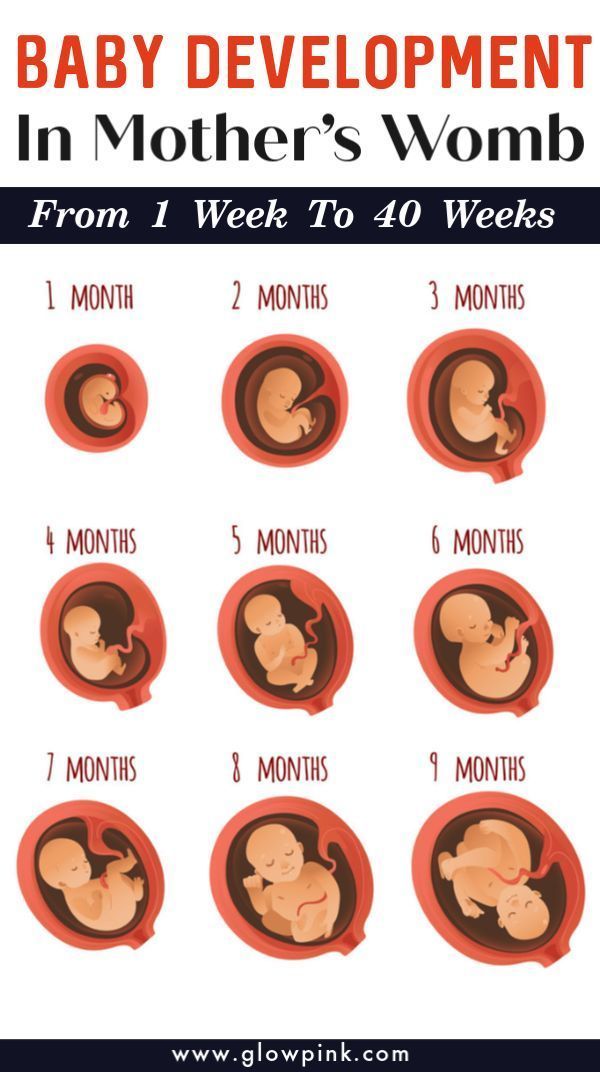 4 cm. While the length of the fetus is 5.35 cm.
4 cm. While the length of the fetus is 5.35 cm.
Features of intrauterine development of the baby, 11 week
How does your baby grow in the 10th week of pregnancy
Your baby's facial features continue to develop: the eyelids develop, and the outlines of the ears are finalized.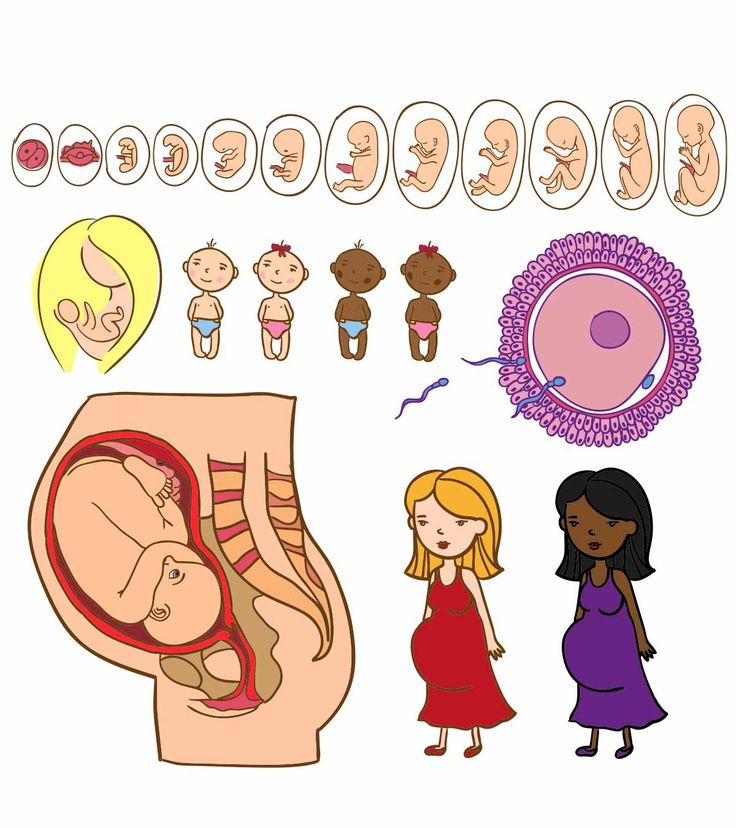 Around this time, the "tail" disappears, and the rest of the body grows. The arms and legs become longer, and the sexual organs and systems begin to form. The stomach is still inactive, and the baby receives all the nutrients through the blood. Now the critical period of development is coming to an end, and until the very birth, the baby will bring his body to perfection. nine0003
Around this time, the "tail" disappears, and the rest of the body grows. The arms and legs become longer, and the sexual organs and systems begin to form. The stomach is still inactive, and the baby receives all the nutrients through the blood. Now the critical period of development is coming to an end, and until the very birth, the baby will bring his body to perfection. nine0003
The child is 2.7 cm long and weighs about 4 g.
Features of intrauterine development of the baby, 12 week
How does the baby develop at the end of the first trimester
Fruit length about 7-8 cm, weight 20-25 gr.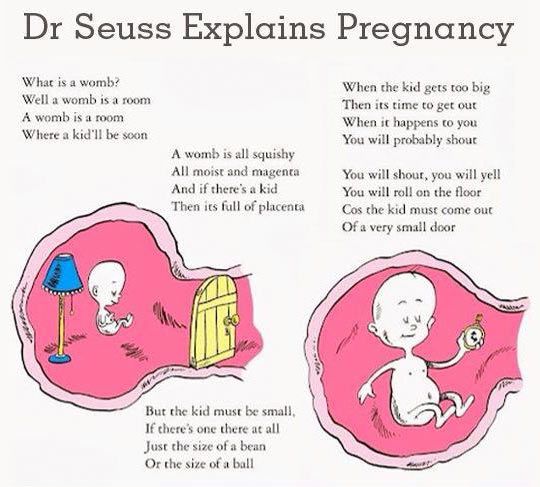 Already formed fingers and toes. There are rudiments of hair, glands and nails, genitals. The thymus and govid gland are developed. Leukocytes appeared in the blood, it begins to produce bile.
Already formed fingers and toes. There are rudiments of hair, glands and nails, genitals. The thymus and govid gland are developed. Leukocytes appeared in the blood, it begins to produce bile.
The first trimester is coming to an end, at this time on ultrasound you can already see a full bladder. Fetal urine enters the mother's bloodstream, and is excreted from the mother's body with her urine. nine0003
An ultrasound examination shows that the fetal egg almost completely fills the uterine cavity, a collapsed yolk sac is visible, which disappears at 13 weeks. Limbs, fingers and toes are clearly defined, the first ossification nuclei appear in most bones, visualization of a four-chamber heart is possible.
Features of intrauterine development of the baby, 12 week
How your baby is growing at 11 weeks pregnant
All the major organs have already formed, although almost half of your child's body length is still in the head.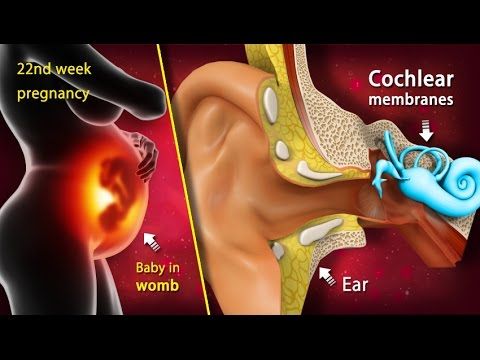 The neck begins to straighten and lengthen, the chin comes off the chest. The eyelids are already completely closed. The baby's eyes will now be closed until about 27 weeks. Nails begin to form on growing fingers. The external genitalia began to appear, but the sex of the child is not yet visible on the ultrasound. Your baby continues to grow rapidly, and with it, so does the placenta, which needs to be provided for all its needs. nine0003
The neck begins to straighten and lengthen, the chin comes off the chest. The eyelids are already completely closed. The baby's eyes will now be closed until about 27 weeks. Nails begin to form on growing fingers. The external genitalia began to appear, but the sex of the child is not yet visible on the ultrasound. Your baby continues to grow rapidly, and with it, so does the placenta, which needs to be provided for all its needs. nine0003
The child is 3.5 cm long and 4 g.
Features of intrauterine development of the baby, 13 week
13 weeks pregnant: baby development
Your baby is starting to grow rapidly this week.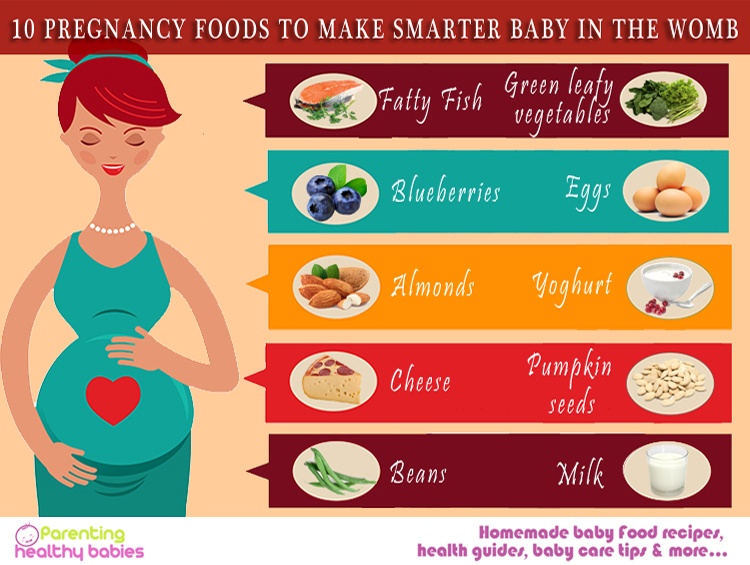 All 20 milk teeth have already been formed. And you may face a new problem - obstruction of the gastrointestinal tract, which can result in constipation and heartburn.
All 20 milk teeth have already been formed. And you may face a new problem - obstruction of the gastrointestinal tract, which can result in constipation and heartburn.
Features of intrauterine development of the baby, 13 week
How your baby is growing at 12 weeks pregnant
The baby is now fully formed. In the next few months, the child will grow and mature, preparing for life in the outside world. The rudiments of milk teeth (20 pieces) appear, bones begin to form. Hair grows.
In the next few months, the child will grow and mature, preparing for life in the outside world. The rudiments of milk teeth (20 pieces) appear, bones begin to form. Hair grows.
The baby is actively moving, although you still do not feel anything, because the baby is still very tiny and swims freely in the amniotic fluid. If you do an ultrasound at this time, you will see how it moves. nine0003
The child is 9 cm long and weighs about 20-25 g.
Features of intrauterine development of the baby, 14 week
How your baby is growing at 13 weeks pregnant
Your child's face is becoming more and more like a human: the eyes are already closer together, and the ears are on the sides of the head, although they do not yet hear. From now on, the head will grow a little slower, and the rest of the body will catch up with it. The intestine, which first grew in the thickening of the umbilical cord, begins to move into the child's abdominal cavity. nine0003
From now on, the head will grow a little slower, and the rest of the body will catch up with it. The intestine, which first grew in the thickening of the umbilical cord, begins to move into the child's abdominal cavity. nine0003
Iris starts working. At first, she moves in short bursts, gradually getting ready to start working at full capacity after giving birth. The baby can already make a fist and may be experimenting with swallowing and thumb sucking. Tiny nails have already appeared on the fingers.
The child is 10 cm long and weighs about 28 g.
How the baby is fed in the womb
In the first two weeks after fertilization, while the egg has not yet had time to implant into the uterine wall and acquire the placenta, it receives nutrients from its thickened inner shell - the yolk sac. nine0003
From the fourth week, the embryo receives the oxygen and nutrients it needs through the chorionic villi, which then transforms into the placenta - a reliable home for the baby, which protects him, and is also the main organ that exchanges between mother and fetus. The placenta is also called the baby's place. This is a temporary organ that is formed and works only during pregnancy.
The placenta is also called the baby's place. This is a temporary organ that is formed and works only during pregnancy.
It is through the placenta that the baby communicates with the mother's body. From here, it receives proteins necessary for the structure of tissues, carbohydrates for energy and maintenance of the body, and fats, vitamins and minerals for proper metabolism. Through the placenta, the child also receives oxygen - without it, the body of the fetus cannot exist. All metabolic products are also excreted through the placenta. The placenta protects the child from infection, prevents immunological conflict between the foreign tissues of the mother and the child, and supplies both organisms with the hormones necessary for their development. nine0003
Read also: How to restore breasts after pregnancy
its bones and soft tissues. The fetus developing in the uterus requires a certain amount of proteins, fats, carbohydrates, vitamins and minerals. All these substances enter the mother's body with food, are broken down in the digestive system to simple molecules and absorbed into the blood, which delivers all the vital components to the fetus. nine0003
All these substances enter the mother's body with food, are broken down in the digestive system to simple molecules and absorbed into the blood, which delivers all the vital components to the fetus. nine0003
The womb is a unique microsystem that protects the baby and constantly adapts to its changing needs. Mother and fetus organisms work in unison. Even a slight change in the level of one of the indicators of the composition of the child's blood instantly causes a compensatory reaction of the mother's body. This feedback guarantees the supply of all nutrients, vitamins and minerals necessary for the normal growth and development of the baby. At the same time, this ensures the removal of the waste products of the fetus from its body. nine0003
The fetus is connected to the mother's body through the placenta and vessels that form the umbilical cord. The umbilical cord is made up of two arteries and a vein, similar to a cord with several ropes, which are twisted together and covered with a sheath.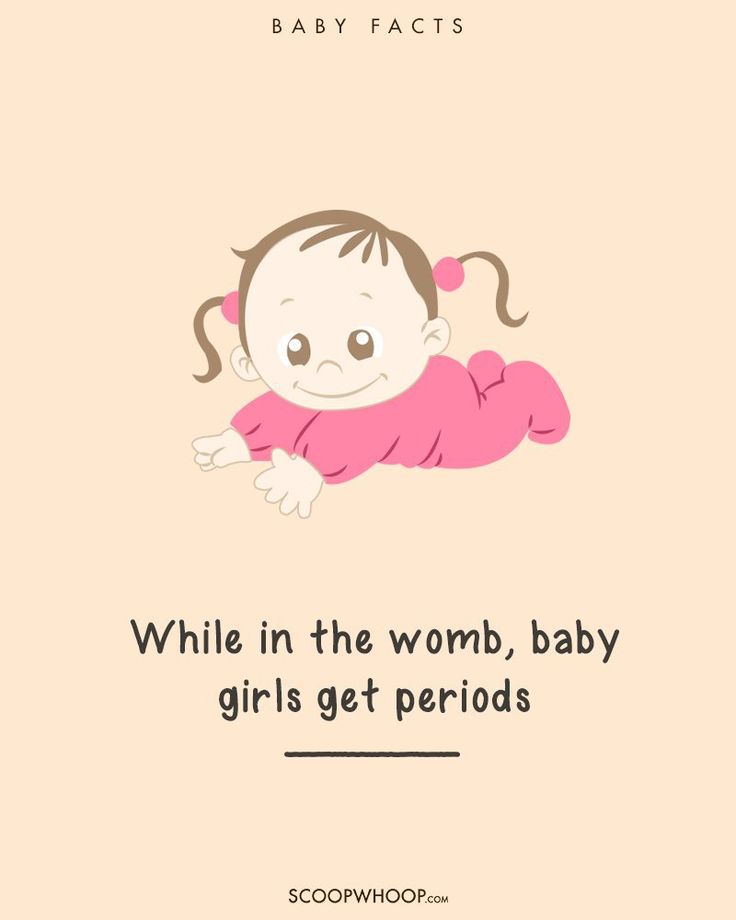 This makes the umbilical cord extremely durable. The umbilical cord can twist and turn, and the force of blood flow in the arteries keeps it taut so your baby can't get tangled up in it. During pregnancy, the length and width of the umbilical cord increases with the growth of the fetus. nine0003
This makes the umbilical cord extremely durable. The umbilical cord can twist and turn, and the force of blood flow in the arteries keeps it taut so your baby can't get tangled up in it. During pregnancy, the length and width of the umbilical cord increases with the growth of the fetus. nine0003
During pregnancy, the placenta also changes to meet the nutritional needs of the fetus. It controls the transfer of nutrients from mother to baby, as well as hormones and other substances. However, if the mother's diet is deficient in nutrients, the placenta will not be able to fully develop to provide the fetus with an effective supply. The low nutrient content of the mother's blood will permanently inhibit the normal functioning of the placenta. The placenta becomes unnecessary when the umbilical cord is cut - at this moment all the organs of the child begin to function independently. nine0003
Read also: Why shouldn't pregnant women wear heels?
The baby is able to extract some of the substances he needs from the mother's body, for example, most often this refers to calcium, which is washed out of the mother's bones if this mineral is absent in her diet.

